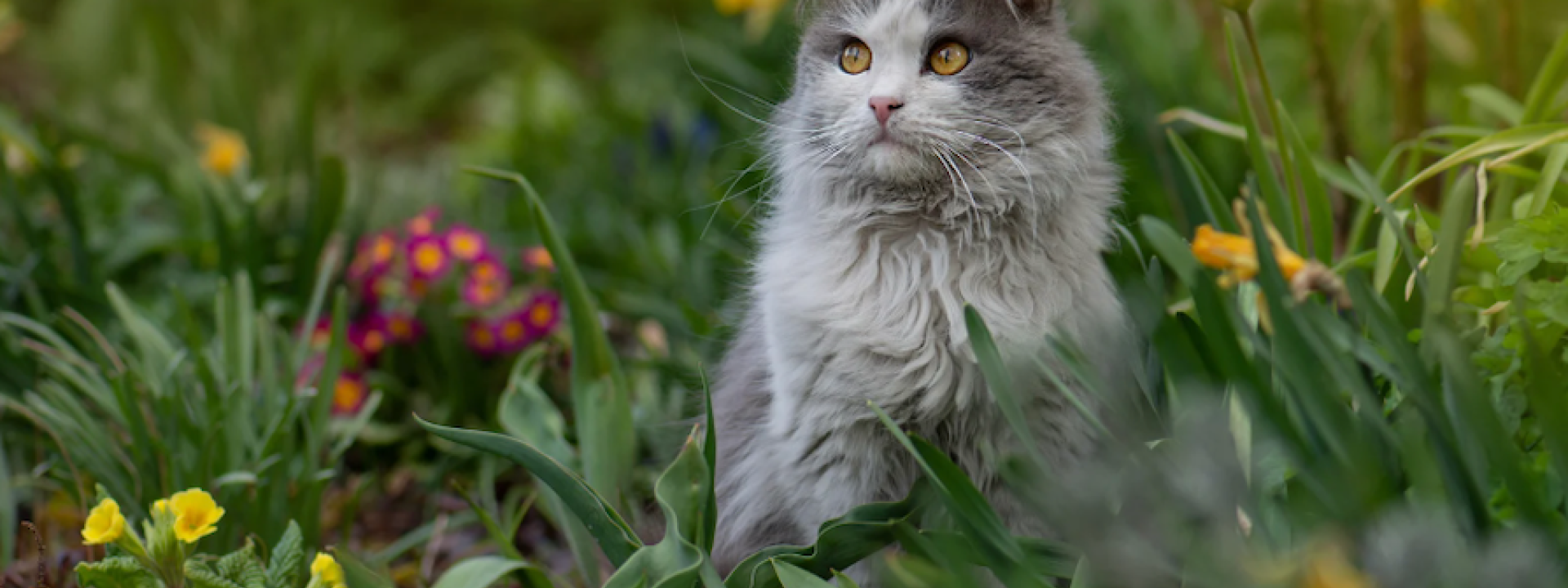Your garden is your oasis—a place to relax, enjoy the outdoors, and maybe even show off your green thumb. But for your pets, it’s a whole different story. To them, it’s an exciting world of exploration, filled with new smells, textures, and things to chew on. Unfortunately, some of those beautiful plants you’ve carefully cultivated could pose serious risks to your furry friends. Let’s dig into how to make your garden a safe and enjoyable space for everyone in your family.
Lilies: A Cat’s Worst Nightmare
Lilies may be gorgeous, but if you have cats, they’re a no-go. These flowers are highly toxic to felines, and even a small exposure—like licking pollen off their fur or nibbling on a petal—can lead to kidney failure. Popular varieties like Easter lilies, tiger lilies, and Asiatic lilies are especially harmful. If you’re a cat parent, it’s best to skip lilies altogether and opt for safer blooms.
Other Plants That Could Spell Trouble
Lilies aren’t the only culprits. Many common garden plants can pose serious risks to both cats and dogs.
Here are a few to watch out for:
- Sago Palm: This tropical beauty is highly toxic, especially its seeds. Ingestion can cause vomiting, diarrhea, seizures, and even liver failure.
- Rhododendron and Azalea: These vibrant shrubs contain toxins that can lead to drooling, vomiting, and heart issues.
- Oleander: Every part of this plant is poisonous. Eating it can result in severe vomiting, irregular heart rhythms, and a dangerous drop in body temperature.
- Foxglove: Known for its tall, striking flowers, foxglove contains toxins that can disrupt heart function and cause serious illness.
- Tulips and Hyacinths: The bulbs of these plants are particularly dangerous, causing drooling, vomiting, and diarrhea if dug up and eaten.
- Daffodils: Like tulips, daffodil bulbs are toxic and can lead to severe stomach upset, convulsions, and heart problems.
- Marijuana: With cannabis becoming more common, it’s important to remember that it’s toxic to pets. Symptoms of ingestion include lethargy, vomiting, and loss of coordination.
For a full list of plants to avoid, check out the ASPCA’s Toxic and Non-Toxic Plants Guide.
What to Do If Your Pet Gets Into Trouble
If you suspect your pet has eaten a toxic plant, don’t panic—but don’t wait, either.
Here’s what to do:
- Identify the Plant: If possible, take a photo or bring a sample of the plant your pet may have ingested. This will help your veterinarian determine the best course of action.
- Call for Help: Contact your veterinarian or a pet poison control hotline immediately. Avoid trying home remedies or inducing vomiting without professional advice, as this could make things worse.
- Get Veterinary Care: Be ready to bring your pet to the clinic for treatment. At Coolidge Veterinary Hospital, we’re here to provide expert care and support when you need it most.
Designing a Pet-Safe Garden
The good news? You don’t have to sacrifice beauty to create a pet-friendly garden.
Here are some tips to keep your outdoor space safe and stunning:
- Do Your Homework: Research every plant before adding it to your garden to ensure it’s safe for pets.
- Use Raised Beds or Barriers: Keep curious noses and paws away from potentially harmful plants by using raised planters or fencing.
- Choose Pet-Safe Plants: Opt for non-toxic options like sunflowers, roses, or snapdragons to add color without the risk.
At Coolidge Veterinary Hospital, we’re passionate about keeping your pets safe, happy, and healthy. If you have questions about toxic plants or need advice on a pet emergency, don’t hesitate to reach out. Together, we can make your garden a safe and joyful space for every member of your family.

